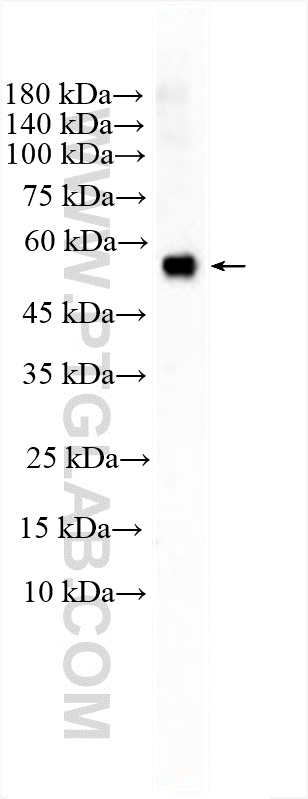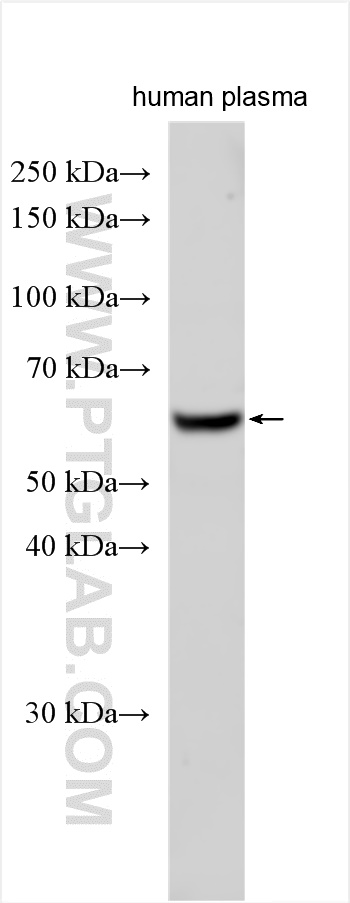验证数据展示
经过测试的应用
| Positive WB detected in | human plasma |
推荐稀释比
| 应用 | 推荐稀释比 |
|---|---|
| Western Blot (WB) | WB : 1:500-1:1000 |
| It is recommended that this reagent should be titrated in each testing system to obtain optimal results. | |
| Sample-dependent, Check data in validation data gallery. | |
发表文章中的应用
| WB | See 1 publications below |
产品信息
12051-1-AP targets APBB3 in WB, ELISA applications and shows reactivity with human samples.
| 经测试应用 | WB, ELISA Application Description |
| 文献引用应用 | WB |
| 经测试反应性 | human |
| 文献引用反应性 | mouse |
| 免疫原 | APBB3 fusion protein Ag2681 种属同源性预测 |
| 宿主/亚型 | Rabbit / IgG |
| 抗体类别 | Polyclonal |
| 产品类型 | Antibody |
| 全称 | amyloid beta (A4) precursor protein-binding, family B, member 3 |
| 别名 | APBB3, FE65L2, Protein Fe65 like 2, SRA |
| 计算分子量 | 486 aa, 53 kDa |
| 观测分子量 | 53 kDa |
| GenBank蛋白编号 | BC013158 |
| 基因名称 | APBB3 |
| Gene ID (NCBI) | 10307 |
| RRID | AB_3085387 |
| 偶联类型 | Unconjugated |
| 形式 | Liquid |
| 纯化方式 | Antigen affinity purification |
| UNIPROT ID | O95704 |
| 储存缓冲液 | PBS with 0.02% sodium azide and 50% glycerol , pH 7.3 |
| 储存条件 | Store at -20°C. Stable for one year after shipment. Aliquoting is unnecessary for -20oC storage. |
背景介绍
APBB3 is a member of the APBB protein family. It is found in the cytoplasm and binds to the intracellular domain of the Alzheimer's disease beta-amyloid precursor protein (APP) as well as to other APP-like proteins. It is thought that the protein encoded by this gene may modulate the internalization of APP.
实验方案
| Product Specific Protocols | |
|---|---|
| WB protocol for APBB3 antibody 12051-1-AP | Download protocol |
| Standard Protocols | |
|---|---|
| Click here to view our Standard Protocols |

